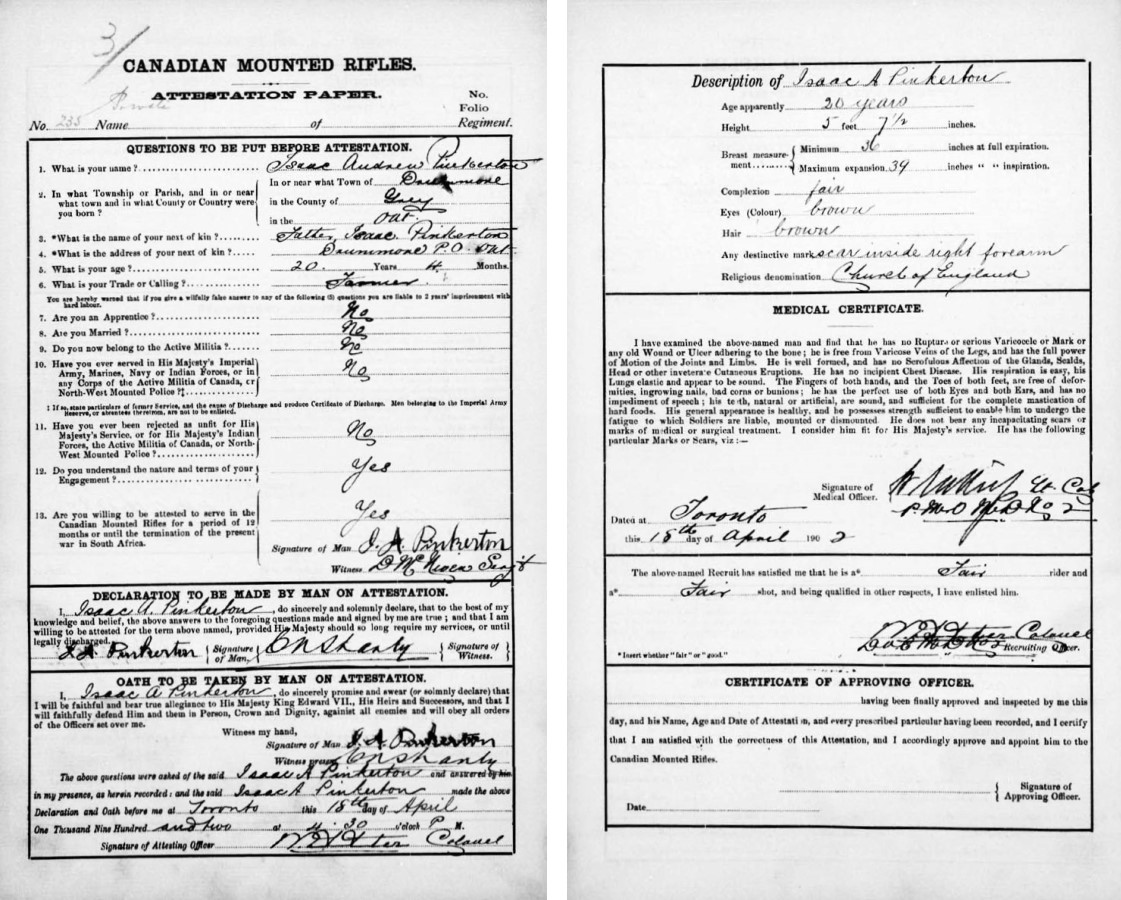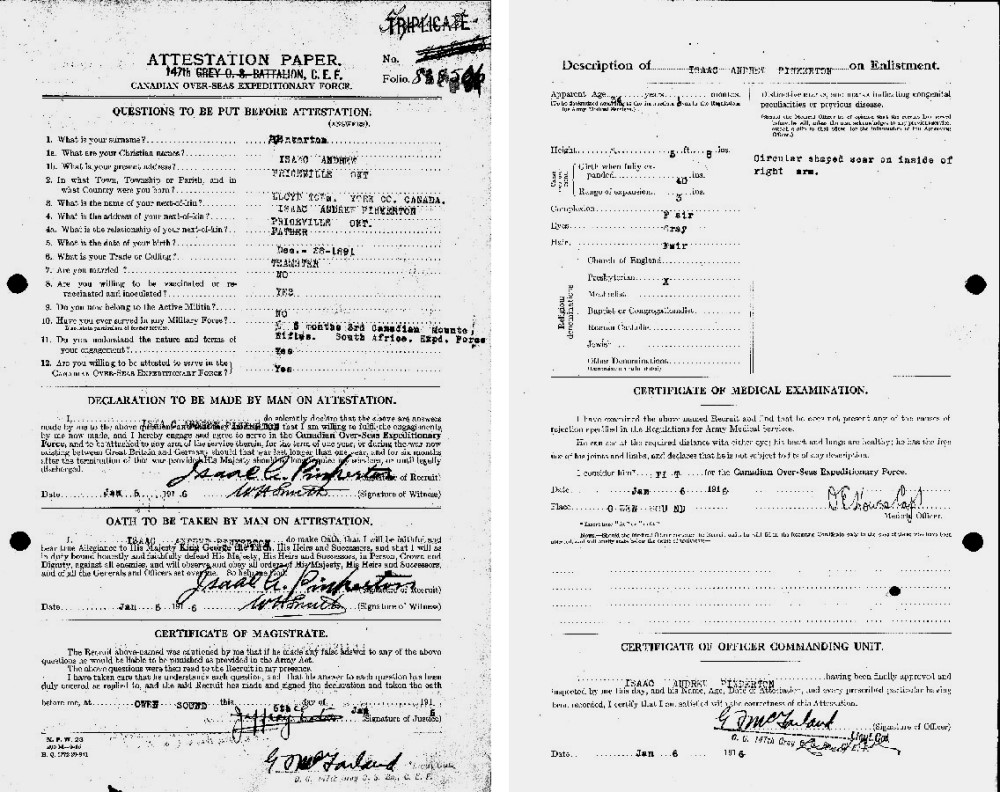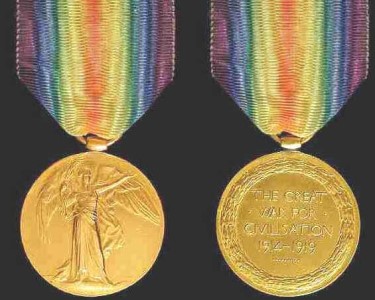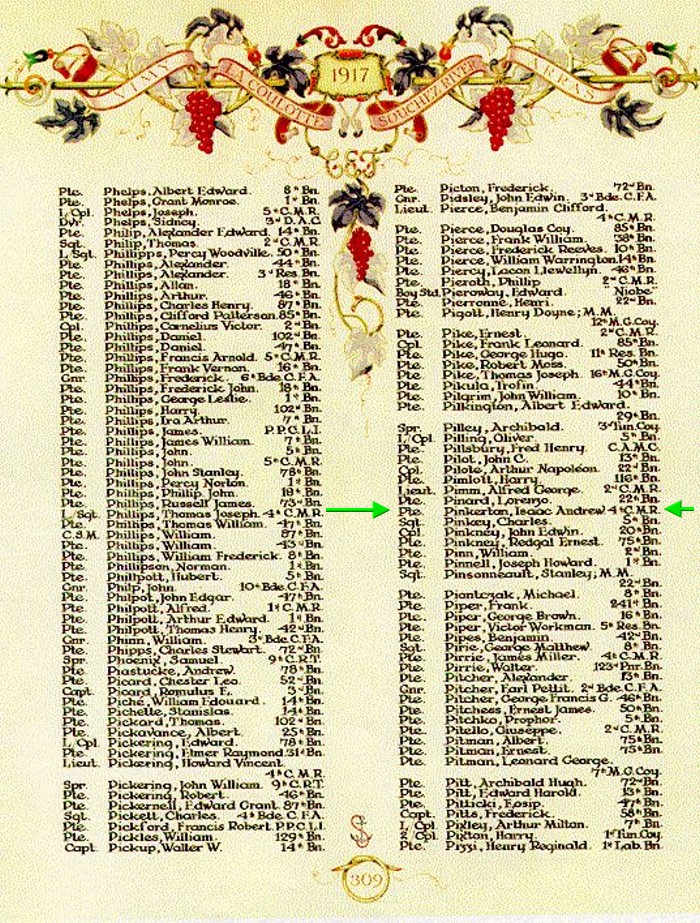 |
Isaac's Boer War Attestation paper
Issac was my 2nd cousin once removed and I never met him however I have researched all of the following information:
Isaac was born December 28, 1891 the son of Isaac Andrew Pinkerton and Jane Alice Harrison.
On Aprl 18, 1902 he joined the Canadian Mounted Rifles with Canadian Expeditionary Force to fight in the Boer War.
 |
On January 6, 1916 he joined the Army and was asigned to 4th Canadian Mounted Rifles (2nd Central Ontario Regt.) with the Canadian Overseas Expeditionary Force to fight in World War I.
 |
Isaac's Service record indicates he was single, trade Teamster, religion Presbyterian, at Age 34 he was 5 ft 8 inces.
His unit sailed November 13, 1916. He arrived in England November 20, 1916 and was sent to France with 147th Battalion.
Isaac was awarded the British War Medal and the Victory Medal. The Meal card indicates they were awarded in the France Theatre on 8 February 1917.


He was killed in action October 26, 1917, at Ypres, Belgium and is Commemorated on Page 309 of the First World War Book of Remembrance for 1917.
 |
He is listed in the Cemetery: MENIN GATE (YPRES) MEMORIAL Belgium
Grave Reference: Panel 30 and 32
Location: The Menin Gate Memorial is situated at the eastern side of the town of Ypres (now Ieper) in the Province of West Flanders, on the road to Menin and Courtrai. It bears the names of 55,000 men who were lost without trace during the defence of the Ypres Salient in the First World War.
Designed by Sir Reginald Blomfield and erected by the Imperial (now Commonwealth) War Graves Commission, it consists of a "Hall of Memory", 36.6 metres long by 20.1 metres wide. In the centre are broad staircases leading to the ramparts which overlook the moat, and to pillared loggias which run the whole length of the structure. On the inner walls of the Hall, on the side of the staircases and on the walls of the loggias, panels of Portland stone bear the names of the dead, inscribed by regiment and corps.
Carved in stone above the central arch are the words:
TO THE ARMIES OF THE BRITISH EMPIRE WHO STOOD HERE FROM 1914 TO 1918 AND TO THOSE OF THEIR DEAD WHO HAVE NO KNOWN GRAVE.
Over the two staircases leading from the main Hall is the inscription:
HERE ARE RECORDED NAMES OF OFFICERS AND MEN WHO FELL IN YPRES SALIENT BUT TO WHOM THE FORTUNE OF WAR DENIED THE KNOWN AND HONOURED BURIAL GIVEN TO THEIR COMRADES IN DEATH.
The dead are remembered to this day in a simple ceremony that takes place every evening at 8:00 p.m. All traffic through the gateway in either direction is halted, and two buglers (on special occasions four) move to the centre of the Hall and sound the Last Post. Two silver trumpets for use in the ceremony are a gift to the Ypres Last Post Committee by an officer of the Royal Canadian Artillery, who served with the 10th Battery, of St. Catharines, Ontario, in Ypres in April 1915.
 |